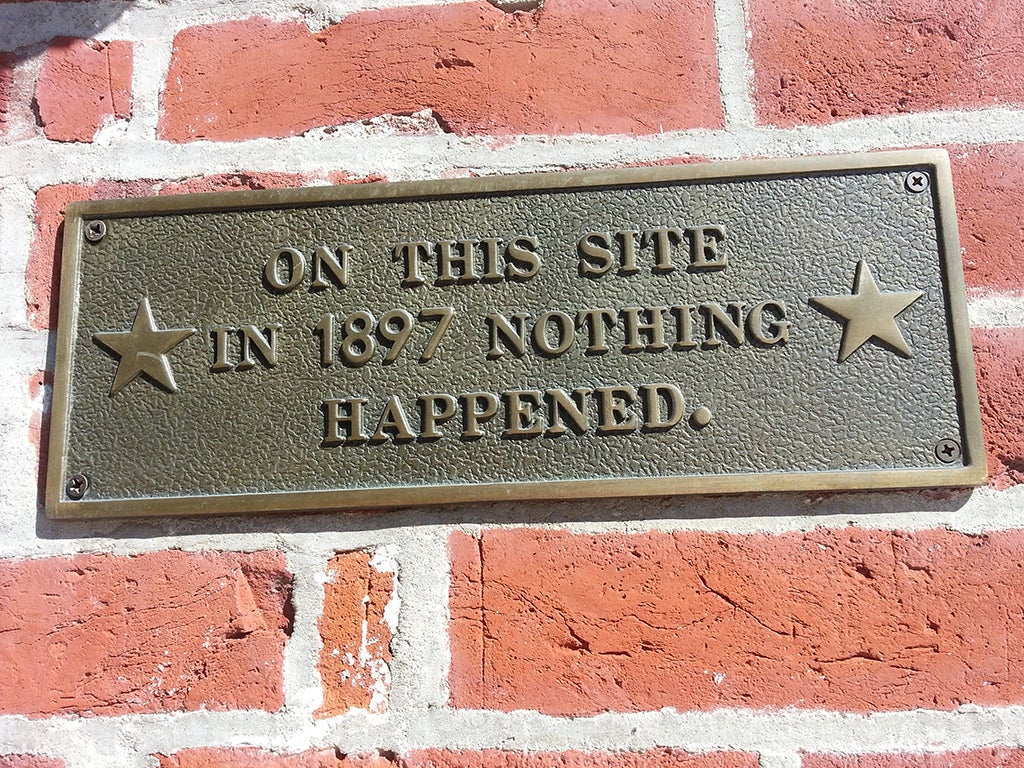Explore the real America: the best way is on foot
You could see real – as opposed to tourist – America in all its earnest eccentricity

I was walking off my supper in the back streets of Boston. Three suited young men – probably in town for a conference – were approaching, laughing and chatting. One swore. Then he saw me. Excruciating embarrassment and profuse apologies followed. It was a nice example of innate American conservatism and good manners.
But I wouldn’t have heard it had I not been independently on foot, by far the most interesting way to absorb the big American cities. Not for me that ovine tour led by the ewe at the front with her half-unfurled umbrella held aloft for the flock to follow. She’ll take you to the cathedrals, historic sites and photogenic spots but you’ll miss the everyday quirky bits such as a wall plaque in South Street, Philadelphia reading “On this spot in 1897 nothing happened” and they’re what I like best about American cities.
So just book your flights, find yourself some accommodation as central as your budget allows and pack some comfortable shoes.
Get on to the streets and look up. Above the banality of Dunkin’ Donuts, CVS Pharmacy, rows of newspaper vending bins, billowing steam from underground railways and cars driven one-handedly by nonchalant, smoking, texting, munching drivers, is an architectural feast.
The best, of course, is the famous Wrigley building in Chicago but there are gems almost everywhere, most of them well cared. American commercial buildings of the late nineteenth and early twentieth century are studded with roundels, lozenges, ornate parapets, cornices, pretty pilasters and window cases, often with delicate contrasting colours against the brickwork. It’s a very distinctive style in buildings, high rise at the time but now dwarfed by modern office blocks. Many have been creatively adapted to new uses too. The 25 storey Marriott Residence Inn where I stayed recently in Penn Square, Philadelphia was, for example once the Market Street Bank and the name remains in the brickwork above the entrance.
And if you walk the streets (get a map from Stanfords in Covent Garden before you go) you see real – as opposed to tourist – America in all its earnest eccentricity. Climbing to the top of one of San Francisco’s many challenging hills we stopped on the summit in a tiny park surrounded by residential streets to eat sandwiches. An elderly woman, presumably a flat dweller, was exercising her two tortoises, released from their little carrying box to munch the grass under careful supervision.
If you’re on foot you can wander into shops at will too. Bloomingdales in Chicago is housed in a former mosque and has all the original, breathtakingly beautiful Islamic geometric art still in place. Macy’s in Philadelphia, once Wanamakers, has the world’s largest pipe organ, installed by John Wanamaker in 1911, and still played regularly. I heard it last month booming grandiloquently over the cavernous central space, vaster than most cathedrals. Quite a statement about retail confidence. Elsewhere in Philadelphia they are busy creating a mall from the old Lit Brothers shop which once occupied a whole block. “Hats trimmed free of charge” is still written over the door.
I like looking at where inhabitants live. Once in Chicago in October I spent a bemused hour walking residential streets which had their Halloween displays of ghouls, pumpkins and spiders out. And who am I to say that it was all distinctly over the top?
The back streets of American cities can also be a sober reminder that this remains a country of extremes: the shuffling, muttering, druggies and drop outs that you see as soon as you step off the gleaming ‘must see’ tourist trails. On the other hand I can’t visit a country just to admire its front parlour done up for my entertainment. I also want to see its kitchens, privy, cellars and the bits my hosts would probably prefer that I didn’t notice.
Not that it has to be just the back streets if you’re on foot. Few walks are as memorable as Lincoln Memorial Park in Washington and that’s in all the guide books. And Boston Common, redolent with revolutionary history, is another delight. So is the Parisian-style boulevard approach to Philadelphia Museum of Art.
Some of what you see is brash and bonkers, but if you want the authentic flavour, your feet will find it for you in a way that a bland organised tour will not. And you won’t have to fathom the mysteries of the local public transport system…always a bonus in America.
Join our commenting forum
Join thought-provoking conversations, follow other Independent readers and see their replies
Comments